Chouchen Rana1*, Haj Ayed Mediha2 and M’hamdi Naceur1
1Laboratory of genetic Animal and Alimentation Resources, National Agronomic Institute of Tunisia, 43 Av Ch Nicolle, 1082 Tunis, Tunisia
2Higher Institute of Agronomy of Chott Meriem, BP no 47-4042 Sousse, Tunisia
Corresponding Author:
Chouchen Rana
Laboratory of genetic Animal and Alimentation Resources
National Agronomic Institute of Tunisia
43 Av Ch Nicolle. 1082 Tunis, Tunisia
Tel: +216-23 84 0866
E-mail: rana.chouchen@yahoo.com
Received Date: November 16, 2017; Accepted Date: November 30, 2017; Published Date: December 27, 2017
Citation: Rana C, Mediha AY, Naceur M. Porcine Deltacoronavirus Outbreaks in the World. J Anim Sci Livest Prod. Vol. 2 No.1: 1.
Copyright: © 2017 Rana C, et al. This is an open-access article distributed under the terms of the Creative Commons Attribution License, which permits unrestricted use, distribution, and reproduction in any medium, provided the original author and source are credited.
Keywords
Zeolite; Poultry; Broiler performances
Introduction
In livestock production systems, antibiotics are commonly fed to animals to prevent diseases and metabolic disorders, as well as to improve feed efficiency. A number of chemical feed additives such as ‘antibiotics’, ‘ionophores’, ‘methane inhibitors’ and ‘defaunating’ agents have been introduced in the ruminant nutrition to improve rumen fermentation and enhance the efficiency of ruminant production [1]. However, most of these additives are not used routinely because of the toxicity problems to the host animals and residues of these chemicals in the animal-derived foods and bacterial resistance to antibiotics as results of increased use in the feeds. Consequently, considerable effort has been devoted towards developing alternatives to antibiotics. Currently, numerous studies have attempted to exploit effective solutions on the zoo technical level and ensuring food security and economic interest. The use of food additives such as clays improves the health status of animals so the speed of growth and feed efficiency while minimizing the consumption of food. This work is in the use of clays in animal feed, especially the zeolite and its effects on growth performance of broilers.
Materials and Methods
Animal and breeding
The test fattening was held for 39 days (from April 4 to May 12) out of a total of 200 day-old chicks of Hubbard JV strain with an average weight of 37.58 g (± 0.596). During the experiment, all subjects received the same treatment and the same veterinary vaccination program.
Diet
In this test three treatments were used: a control treatment (A0) containing no additive and two experimental diets (A0.5) and (A1) contain 0.5 to 1% of zeolite, respectively. Each treatment was randomly assigned to 3 repetitions which make a total of 9 groups of 22-23 subjects (3 × 3 × 22). The chicks were randomly distributed on lots while maintaining a standard deviation of 5% from the average weight of treatments to ensure consistency between different groups of chicks.
Protocol of the experiment
A weekly weigh all animals were performed every Monday except the last weighing was performed after 4d of the foregoing. Distributed food and remaining quantities were determined every Sunday. Food consumption was calculated as the difference between distributed and the remaining amount, while taking into account mortality. Throughout the experimental period, daily control of mortality was conducted each batch and for each treatment.
Statistical analysis
The statistical analysis aims to determine, from the collected data the effect of zeolite supplementation on growth performance of broilers, the digestibility of foods and some carcass parameters. We carried out an analysis of variance using the general linear model (GLM) of the SAS software Version 9.14 (2004) and compared the averages calculated by the "Student" test.
Results and Discussion
Growth performances
Weight: The average weight measured weekly during the test fattening were summarized in Table 1. The analysis of results showed that groups of control diet (A0) and supplemented diets (A0.5) and (A1) are homogeneous and have an average initial weight in the same order of 37.59 g (± 0, 150); (P=0.228). Weights from the 8th to 39th day showed no significant difference (p ≥ 0, 529) in the weight of the animals for the different regimes. From the fifth week, a slight delay weight (-50 g) for subjects supplemented with zeolite (A0.5, and A1) was recorded compared to the control diet, however this difference remains low. This may probably be due to a delayed effect of the zeolite. At the end of the experiment (39 days) average weight is; 1966 g for the control group (A0), 1936 g and 1906 g respectively for zeolite diets A0.5, and A1, it’s a slight improvement from 30 to 60 g for the benefit of zeolite. Unlike Kurnick and Reid, clay improves the growth rate in broilers allowing better utilization of protein and energy. The reason for this is that the clay prolongs the transit time of food. And according to Southern et al.; Tauqir and Nawaz; Trckova et al. [2-4] adding clay imposed in the diet of chickens leads to noticeable effects on feed efficiency, including an increase in body weight gain.
| W |
Age (d) |
| Treatment |
1 |
8 |
15 |
22 |
29 |
36 |
39 |
| A0 |
37.48 |
151.64 |
406.48 |
707.54 |
1101.57 |
1743.6 |
1966.8a |
| A0.5 |
37.78 |
143.53 |
391.49 |
735.02 |
1156.1 |
1732.28 |
1939 |
| A1 |
37.51 |
143.86 |
387.63 |
742.26 |
1107.4 |
1693.97 |
1906.2 |
| Prob |
0.623 |
0.529 |
0.53 |
0.627 |
0.609 |
0.852 |
0.869 |
| CME* |
0.228 |
5.455 |
11.838 |
25.794 |
40.783 |
64.085 |
79.93 |
*CME : Mean Square of Error.
Table1: Change in weight (g) during the test.
Average daily gain (ADG): The following Table 2 shows the evolution of ADG throughout the experiment. The values of global GMQ of three diets (49.47 g, 48.75 g and 47.92 g) respectively for (A0, A1, and A0.5) are statistically similar (p=0.870). ADG of the three treatments show a similarity in the first (p=0.530) and the second (p=0.553) weeks of age. A slight increase in ADG during the next two weeks was observed for animals receiving zeolite diets compared to the control group, confirms the rise in weight of the subjects receiving the zeolite previously observed between the 3rd and 4th week. A slight improvement in ADG (p ≥ 0.314) was observed in the last two weeks. Subjects receiving the control diets are characterized by a better ADG during the test where they reached a maximum value of 91, 72 g at age 5 weeks. While those in the diet supplemented 0.5% and 1% respectively have achieved a maximum of 82, 31 g and 83, 79 g. This confirms the delayed effect of the zeolite reported previously.
| ADG |
Age (d) |
| Treatment |
8 |
15 |
22 |
29 |
36 |
39 |
ADGg* |
| A0 |
19.03 |
36.4 |
43 |
56.29 |
91.72 |
55.8 |
49.47 |
| A0.5 |
17.62 |
35.43 |
49.08 |
60.15 |
82.31 |
51.69 |
48.75 |
| A1 |
17.72 |
34.83 |
50.66 |
52.16 |
83.79 |
53.07 |
47.92 |
| Prob |
0.53 |
0.553 |
0.225 |
0.223 |
0.314 |
0.92 |
0.87 |
| CME** |
0.931 |
0.983 |
2.908 |
2.863 |
4.256 |
7.165 |
2.047 |
*ADGg: global average daily gain
**CME: Mean Square of Error
Table 2: Evolution of the average daily gain (g/d).
These results prove that doses of zeolite incorporated in foods have no effect on the growth of chickens. Although it has been shown that the addition of 2 to 5% clay in the diet of farmed birds causes perceptible effects on feed efficiency, including an increase in body weight gain [2-5].
The histogram (Figure 1) shows the same results during the startup and the finishing period with more or less variation around the middle of breeding and no significant increase in ADG for the benefit of subject’s supplemented zeolite. Globally, zeolite has no effect on the growth of animals, except that the third week of the experiment a non-significant improvement (p=0.627) for weight (p=0.225) for ADG was observed.
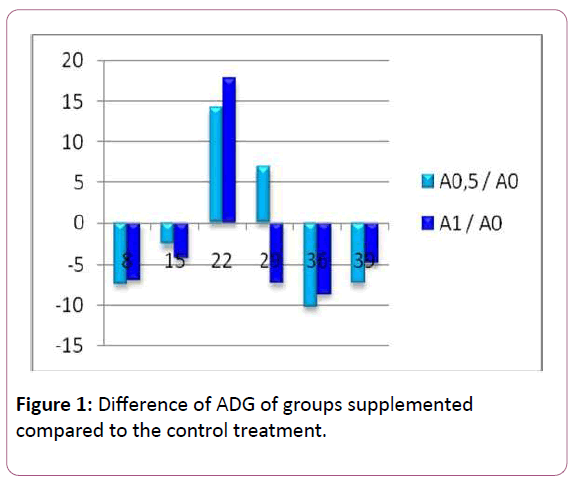
Figure 1: Difference of ADG of groups supplemented compared to the control treatment.
These results do not corroborate with those of Ayed et al. [6] which showed that weight gain of subjects receiving a diet supplemented with a clay were approximately 11% higher than those of control subjects and it seems that effect of the clay on the performance of chicks was higher (P<0.01) between 1 and 21 days of age than in the rest of the experimental period which is not the case for the results obtained in this work.
Consumption of food
During the first week, the chickens have ingested similar amounts (p=0.908). However, an improvement in the consumption of the food supplemented with the zeolite is observed during the second (+0.49 g), the third (+4.11 g) and the 4th (+6.84 g) week but not with a significant difference (p ≥ 0.622) (Table 3). During the fifth week, there is a change in consumption in favor of the control diet which is 2.045 g. By the third week of age with the transition from CF1 to CF2, the appetite of animals and their consumption increased slightly. Contrary to the results found, Ayed et al. [6] reported that the addition of a dose of 0.5 to 2% of a clay in the diet of broilers causes appreciable effects on feed efficiency as well as a decrease in the ingestion of the supplemented animals for explaining that the specific physical structure of the clay can reduce the passage of nutrients and thus improve their absorption. The transport of nutrients as well will be extended where improved. Saskatchewan (Salmon) studied the effect of adding 2.5% of clay in ration used in turkey’s tablets. He concludes that the clay can increase the food utilization efficiency, increase the sustainability of tablets if they contain a moderate amount of fat and finally to slightly reduce the cost of food consumed digestibility and mineral absorption.
| Bdfs |
Age (d) |
| Treatment |
8 |
15 |
22 |
29 |
36 |
39 |
Qg* |
| A0 |
14,93 |
45,82 |
66,82 |
93,11 |
141,67 |
183,01 |
92,05 |
| A0.5 |
14,32 |
46,50 |
71,02 |
102,69 |
141,32 |
187,38 |
95,19 |
| A1 |
14,83 |
46,13 |
70,83 |
97,22 |
137,93 |
186,43 |
93,40 |
| Prob |
0,908 |
0,935 |
0,622 |
0,245 |
0,788 |
0,893 |
0,722 |
| CME** |
1,048 |
1,311 |
3,303 |
3,587 |
4,150 |
6,766 |
2,683 |
Averages in this table are not significant (p>0.05)
*Qg : overall quantity
**CME : Mean Square of Error
Table 3: Evolution of consumption (Q) (g/h/d).
In conclusion, during the whole period of fattening dose of zeolite did not affect food consumption of in startup and growth concentrate for broilers (Figure 2).
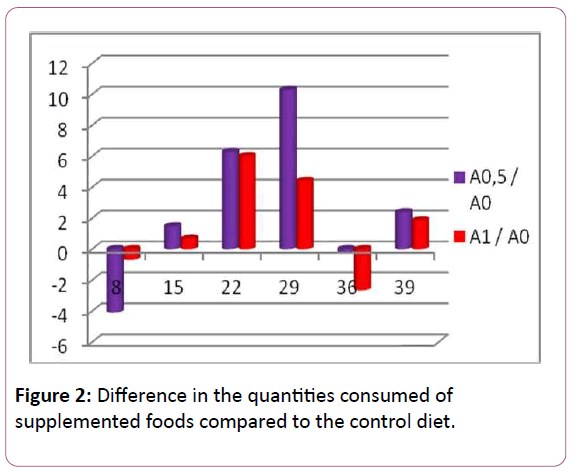
Figure 2: Difference in the quantities consumed of supplemented foods compared to the control diet.
Feed intake (FI)
The overall feed intake (FIg) of the control animals was statistically similar to the animals of the experimental diets A0.5, and A1 (p=0.543). Table 4 shows that during the first two weeks the results showed no significant difference between the FI (p>0.46), then a significant trend (p=0.07) in the third week has shown in favor of subjects of supplemented group by 1% of zeolite, this increase of feed intake of control animals or supplemented animals by 0.5% zeolite is due to the decrease in ADG during the same period. From the fourth week, a statistically significative little improvement (p=0.297) of feed intake in favor of the control subjects was observed. The difference between the feed intake obtained for the control and the supplemented group by 0.5% is less than the difference between the control group and of supplemented one by 1%. In conclusion, the zeolite has a negative effect on feed intake with increasing dose (Figures 3 and 4). The clay used in substitution of 2% of the food has an effect on the growth rate and feed efficiency, which are maintained with a tendency to be improved and, simultaneously, there is an increase in the muscle percentage [7,8].
| FI |
Age (d) |
| Treatement |
8 |
15 |
22 |
29 |
36 |
39 |
FIg* |
| A0 |
0,78 |
1,26 |
1,56 |
1,66 |
1,55 |
3,40 |
1,86 |
| A0.5 |
0,82 |
1,31 |
1,45 |
1,71 |
1,74 |
3,67 |
1,96 |
| A1 |
0,84 |
1,32 |
1,40 |
1,87 |
1,65 |
3,61 |
1,95 |
| Prob |
0,722 |
0,460 |
0,076 |
0,316 |
0,297 |
0,850 |
0,543 |
| CME** |
0,04 |
0,03 |
0.04 |
0,09 |
0,07 |
0,347 |
0,06 |
Averages in this table are not significant (p>0.05)
*FIg : overall feed intake
**CME : Mean Square of Error
Table 4: Evolution of the feed intake (FI).
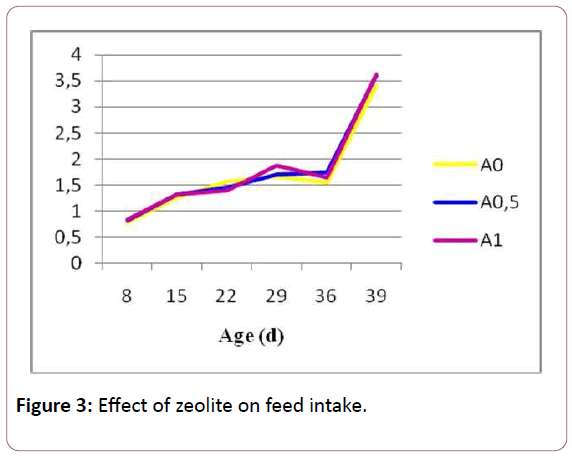
Figure 3: Effect of zeolite on feed intake.
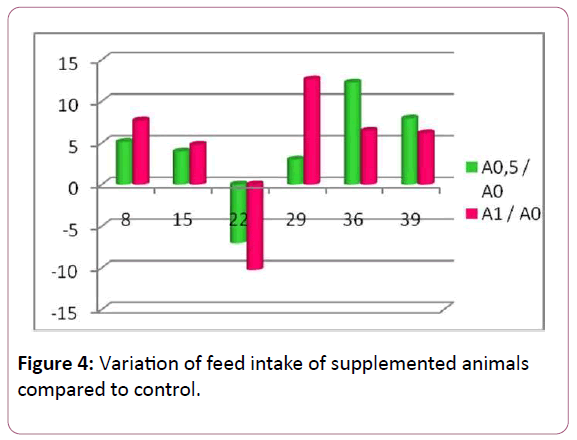
Figure 4: Variation of feed intake of supplemented animals compared to control.
Mortality
The overall mortality rate of animals in the control diet (7.25%) is lower than that of the subjects of diets supplemented with the zeolite (13.65% and 10.54%). However, these differences remain low (p=0.72) and this rate is considered high with the standards (%M ≤ 5%) (Table 5). Most deaths occurred in the first week of the test (Figure 5) it is a critical period for animals that are still fragile and sensitive and have undergone during this period of temperature changes.
| M |
Age (d) |
| Treatement |
8 |
15 |
22 |
29 |
36 |
39 |
Mg* |
| A0 |
7 ,25 |
0 |
0 |
0 |
0 |
0 |
7,25 |
| A0.5 |
9,09 |
0 |
0 |
0 |
4,55 |
0 |
13,65 |
| A1 |
9 ,09 |
0 |
0 |
0 |
1,45 |
0 |
10,54 |
| Prob |
0,959 |
0 |
0 |
0 |
0,53 |
0 |
0,72 |
| CME** |
5,166 |
0 |
0 |
0 |
2,755 |
0 |
5,466 |
Averages in this table are not significant (p>0.05)
*Mg : overall mortalityglobal
**CME : Mean Square of Error
Table 5: Evolution of mortality (M) (%).
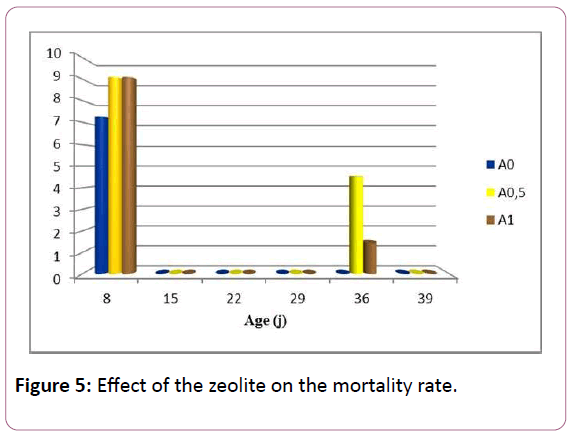
Figure 5: Effect of the zeolite on the mortality rate.
And with the stock problem of litter, there was no change of the latter resulting thus the appearance of the disease of coccidiosis in the 5th week despite preventive treatment with anticoccidial. These recorded mortality rates are similar for the different groups, it seems that animals fed the additive are highly fragile compared to others. The addition of 2.5 or 5% of the clay to the ration of the reduced mortality chickens and the moisture content of the manure according Quisenberry [9].
Conclusion
The results of our study show that clay tested and incorporated with 0.5 to 1% in concentrates starter for broilers are not very conclusive and do not allow us to crown the effect of zeolite on ingestion and growth parameters. This experiment requires another large trial with a healthy workforce and wider, better conditions and food with good quality and good size to implement the effectiveness of the zeolite. An economic study of the cost of a kg of body weight will also be interesting to perform.
References
- Patra AK, Saxena J (2009) Dietary phytochemicals as rumen modifiers: a revew of the effects on microbial populations. Antonie van Leeuwenhoek 96: 363-375.
- Southern LL, Ward TL, Bidner TD, Hebert LG (1994) Effect of sodium bentonite or hydrated sodium calcium aluminosilicate on growth performance and tibia mineral concentrations in broiler chicks fed nutrient-deficient diets. PoultSci 73: 848-854.
- Tauquir NA, Nawaz H (2001) Performance and economics of broiler chicks fed on rations supplemented with different levels of sodium bentonite. Int J AgricBiol 3: 149-150.
- Trckova M, Matlova L, Dvorska L, Pavlik I (2004) Kaolin, bentonite, and zeolites as feed supplements for animals: health advantages and risks. Vet Med-Czech 49: 389- 399.
- Carré B (2000) Effets de la taille des particulesalimentairessur les processusdigestifs chez les oiseauxd’élevage. INRA Prod Anim 13: 131-136.
- Hadj AM, Zghal I, Rekik B (2011) Effect of sepiolite supplementation on broiler growth performances and carcass yield.
- Castaing (1994) Effet de l’introduction de sépioliteExalselon les teneurs en cellulose brute et matièregrassed’aliments pour porcscharcutiers. JournéesRech. Porcine en France 26 : 199-206.
- Parisini SL, Panciroli A, Coppa C (1993) Effettidellasustituzione con sepiolite di parte de la mangimenelfalimentazione del suinopesante. Atti10 et dquo, CongressoNazional ASPA 459-464.
- Quisenberry JH (1968) The use of clay in poultry feed. Clay Miner 16: 267-270.






